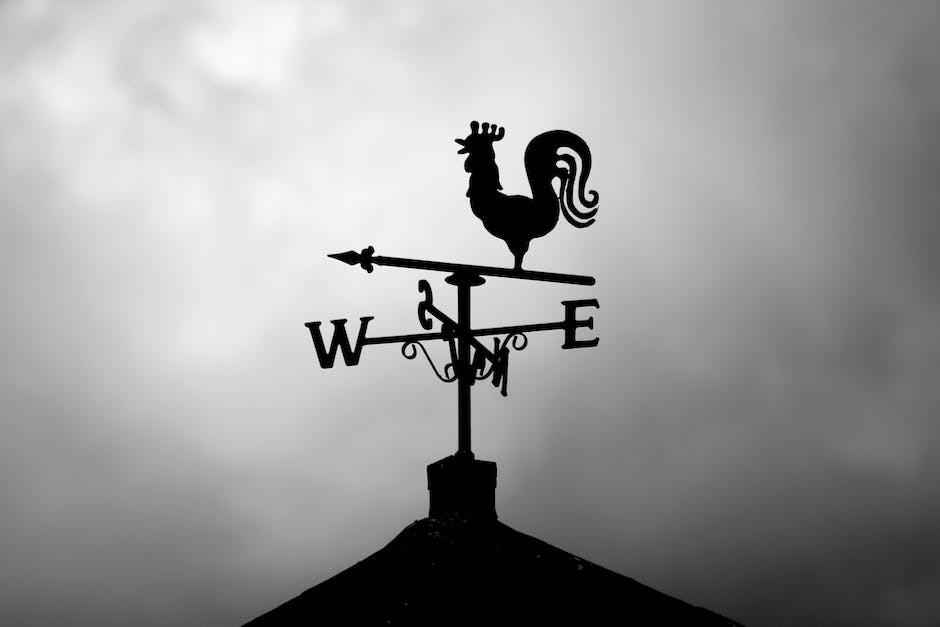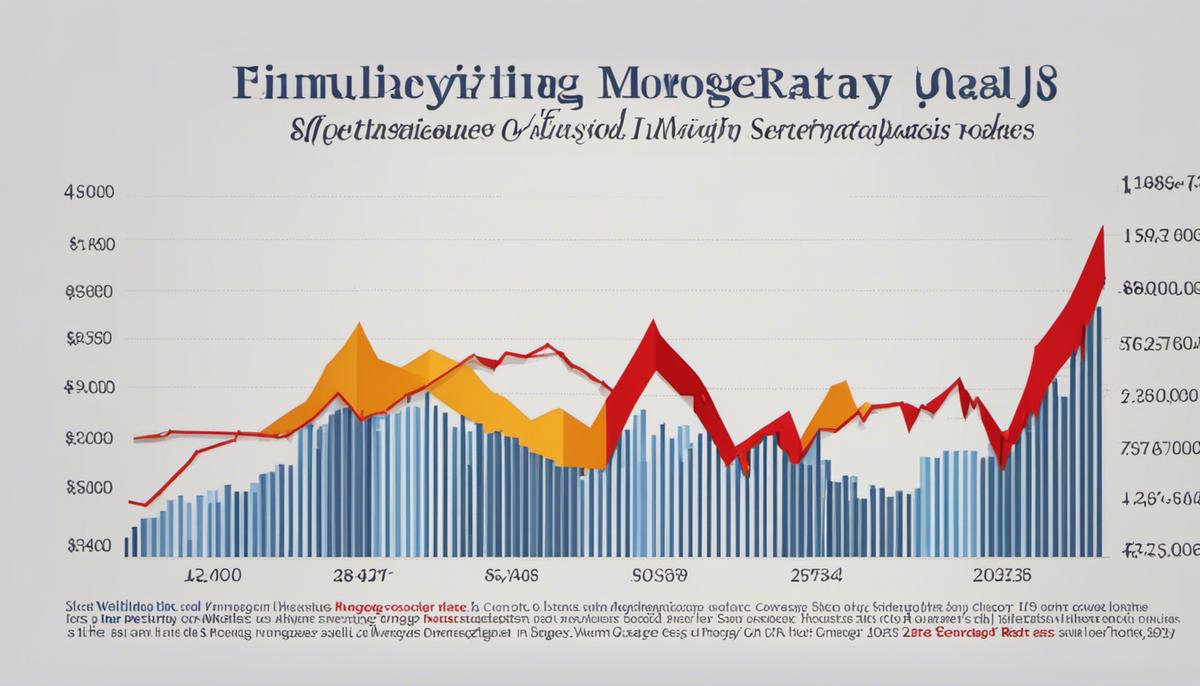In the intersection of finance and business, a particular pair of phenomena carry immense significance – inflation and mortgage rates. Driving a variety of outcomes in the economy, their interaction forms a vital element in economic dynamics. This exploration delves into inflation and mortgage rates, not only defining them in an accessible manner but also assessing their historical relationships, current trends, and undeniable impacts on the economy and businesses. Providing a business-centric perspective, it will paint a clear picture of these forces and offer effective strategies to weather the conceivable risks arising from inflation.
Table of Contents
Defining Inflation and Mortgage Rates
Ready to navigate the complex world of economic trends? Buckle up for a thorough dissection of two key economic indicators: inflation and mortgage rates. A deep understanding of these topics is essential to stay ahead of the curve in the business landscape.
So, what exactly is inflation?
Inflation is typically referred to as the ongoing rise in the general level of prices in an economy. It signifies a decrease in the purchasing power of the unit of currency, such as the dollar. It’s a comprehensive measure that impacts everyone in the economy – from the multinational corporations setting high-power deals in dashing skyscrapers, to the everyday worker hustling to put food on the table.
In simple terms, when inflation is high, each dollar buys a little less. It’s an entrepreneur’s cue to think about pricing strategies and cost of materials while also considering the affordability factor for consumers.
Now, let’s move onto the other half of the puzzle – mortgage rates.
Mortgage rates are the interest rates assigned to a home loan. It impacts the housing market significantly because it determines how much homeowners pay back each month on their home loans. Entrepreneurially speaking, this is a crucial parameter affecting the real estate market, construction industry, and household spending patterns.
Fluctuating mortgage rates pivotally influence affordability and demand in the housing market. When rates are low, it’s a sign for potential homeowners to step on the home-buying gas pedal. High mortgage rates, on the other hand, typically slow property sales. For one, it skyrockets the total cost of buying a home as the bulk of a mortgage repayment is interest.
But how do inflation and mortgage rates tie into economic trends?
The Federal Reserve uses interest rates as a tool to keep inflation in check. When inflation trends cause prices to escalate swiftly, the Federal Reserve might raise interest rates, thus affecting mortgage rates directly. Increased interest rates often cool economic activity, which in turn slows inflation.
On the other hand, if inflation is low, the Federal Reserve may cut rates to stimulate economic growth. Lower interest rates make borrowing cheaper, thus creating a conducive environment for business investment and driving up consumer spending.
In this economic dance of factors, entrepreneurs and industry leaders must embrace adaptability. Recognizing the signs and interpreting these economic moves could be the difference between leading the market and struggling to keep up.
Remember, knowledge isn’t just power – it’s profit. Arm yourself with the comprehension of these vital elements, and you’re one step closer to dominating your respective industry. Adapt your business strategies to the rhythm of these economic trends, and nothing can stop you from making your mark in the business world. There’s no better time than the present to ride the wave of economic trends, and strengthen your business prowess.

Historical Relationship between Inflation and Mortgage Rates
Diving deeper into the relationship between inflation and mortgage rates, it’s crucial to comprehend how changes in these elements can manifest in various sectors. Both inflation and mortgage rates are interconnected and influenced by economic factors, and their fluctuations could ripple across the business landscape, affecting everything from investment strategies to consumer behavior.
At the heart of this intricate interaction lies the principle that inflation rates and mortgage rates tend to move in the same direction; higher inflation will usually result in higher mortgage rates, and vice versa. The rationale behind this parallel movement rests on the reality that lenders, who are giving up the use of their money for a certain period as they issue mortgages, require a return that at least matches the pace of inflation.
However, this doesn’t imply that every surge in inflation invariably leads to an equal increase in mortgage rates. The process is more nuanced. Lenders and investors not only combat current inflation but also anticipate future inflation. If the economy projects higher inflation expectations, mortgage rates are likely to rise. Consequently, this makes borrowing more expensive, potentially stifling business growth, dampening consumer spending, and slowing down the housing market.
Another important facet is the bond market’s role. Treasury bonds and mortgage rates are inversely related; when bond yields are high, mortgage rates tend to be low and vice versa. Rising inflation can scare off potential bond buyers, causing bond prices to fall and yields to rise. In reaction, to attract investors, mortgage rates might spike. This connection could exert considerable pressure on businesses relying on borrowed capital, potentially influencing their performance and competitive stance in the market.
Entrepreneurs and business leaders must adeptly navigate these possibilities. It’s all about harnessing the capacity for innovation to meet the challenges thrown by volatile economic trends. While companies might not have direct control over inflation or mortgage rates, they can wield corporate strategies to maneuver the effects. This could include optimizing expenses, adjusting pricing formulas, diversifying risk and investment portfolios, and pursuing strategic alliances.
The interaction of inflation and mortgage rates presents not just obstacles but opportunities as well. A business savvy entrepreneur would leverage volatile mortgage rates to invest in real estate when the market slows down, or lock in lower mortgage rates when the expectation of inflation rise.
With rapid digital transformations and evolving economic landscapes, the dynamics of this interaction continue to evolve. To maintain one’s competitive edge, entrepreneurs and business leaders must commit to ongoing learning and unlearning, staying in tune with economic indicators while continually adapting business strategies accordingly.
In business, nothing is static. Recognizing the intersection between inflation and mortgage rates, anticipating their movements, and understanding potential implications on business isn’t just an exercise—it’s a fascinating ongoing journey of strategic decisions with the potential to steer the outcome of one’s entrepreneurial voyage. Firmly grasp the helm, and welcome the waves. They are sure to bring you to the shores of success.

Current Trends in Mortgage Rates and Inflation
Emerging Trends in Mortgage Rates and Inflation
If there’s anything as elusive and significant as a mysterious beast in the world of finance and business, it’s inflation and mortgage rates. They are two of the most critical variables that shape the economic beehive, continuously influencing the functioning of various sectors in both conspicuous and subtle ways. Let’s decode and traverse some of the most contemporary trends related to these aspects.
The Relationship between Inflation and Mortgage Rates
An intricate triangle connects inflation, mortgage rates, and the Federal Reserve. Simply put, when inflation is tepid, mortgage rates will typically mirror that and plummet in response, hence, making borrowing more affordable. On the flip side, ascending inflation often pushes mortgage rates to soar. Therefore, it’s crucial to keep an eye on inflation trends when forecasting mortgage fluctuations.
The Interplay Effect on Various Sectors
Changes in inflation and mortgage rates stretch their tendrils far and wide, touching virtually every sector. To cite an illustration, when the inflation needle moves upward, it might cause the agriculture industry to feel the pinch as higher interest rates can potentially make farming loans more expensive.
Parallel Movement of Inflation Rates and Mortgage Rates
Though not always, it’s commonplace for inflation and mortgage rates to move in concert. Academics reason that lenders assure a return over the inflation rate, which has to be adjusted periodically, hence leading to a direct relationship with mortgage rates.
Role of Lenders and Investors
Lenders and investors have a pivotal role in anticipating and combatting inflation. Staying abreast with inflation and adjusting strategies accordingly can allow them to mitigate significant loss and leverage the challenges transformed into opportunities.
Impact of Inflation on Borrowing Costs and Housing Market
Inflation doesn’t just eat away your purchasing power, it also alters borrowing costs. A rise in inflation can inflate borrowing costs, subsequently putting a damper on the housing market.
Connection between Mortgage Rates and Treasury Bonds
Mortgage rates are intimately linked with Treasury bonds. A surge in bond yields, driven either by inflation anticipation or other economic factors, often results in a climb in mortgage rates. Therefore, monitoring bond yields can give businesses an insightful snapshot of potential mortgage rate shifts.
Strategies for Businesses
Businesses heavily reliant on borrowed capital may feel the squeeze of rising bond yields. Therefore, businesses must have proactive strategies on hand to offset inflation and mortgage rate shifts. This is where the significance of cash reserves, cost efficiency, and diversification techniques come into play.
Opportunities and Adaptation
Amid the roller-coaster ride of inflation and mortgage rates, volatility can indeed breed opportunities. For instance, when mortgage rates are low, it opens doors for businesses to buy commercial properties, thereby securing future gains. However, to harness these opportunities, there’s a need for ongoing learning, adaptation, and a keen eye on evolving economic landscapes. Emphasizing the need for agility and the readiness to pivot as per the changing tides is indeed the way to drive in the fast lane of the current economic environment.
In essence, understanding the complex yet fundamental dynamics of inflation and mortgage rates holds the key to navigating the often-unpredictable world of business and finance. There’s no better time to delve into these trends and strategize accordingly than now. At the crossroads of uncertainty and opportunity, lies the power of informed decision-making. It’s time to seize it.

Consequences for the Economy and Businesses
While we have already delved into the significant impact of inflation and mortgage rates on industries and household spending, we haven’t yet centered our conversation on businesses. Being a business leader, having a company’s financial health in the forefront of your mind is crucial. Digging deeper into the implications of mortgage rates and inflation on businesses is a topic necessitating our attention.
A heightened level of inflation diminishes the dollar value, resulting in higher costs to produce goods and services. If a business is unable to pass these costs onto the consumer, it can result in decreased profitability and business growth challenges. On the contrary, companies with pricing power can make profits during inflation by increasing prices proportionately with inflation.
Shifting focus to mortgage rates, these are the cornerstone of the real estate and banking industries. For businesses, whether it is for operational, investment, or expansion purposes, mortgage rates have a significant part to play. Fluctuating mortgage rates affect your business decisions about whether to rent or buy property, undertake expansion, or speculate on property.
Businesses, specifically small to medium enterprises, often rely on borrowing to drive expansion. If mortgage rates climb, the cost of borrowing increases. Consequently, debt becomes pricier, and companies must fork out more to service their debt. This can lead to cutbacks in different areas like employment, salary reductions, or even delaying expansion plans.
However, it’s not all gloom and doom. Opportunities do arise with rising inflation and mortgage rates. For businesses with a cache of cash reserves, the higher interest rates present an opportunity to earn more on their stored capital. And for those in the lending business, increased rates lead to larger profit margins.
It’s also worth noting the correlation between mortgage rates and treasury bonds. Mortgage rates often move in tandem with the returns on 10-year Treasury Notes. When bond yields rise, so too do mortgage rates, and this can imply increased borrowing costs for businesses.
These intricate economic mechanisms demand sharp decision-making. In response to inflation and mortgage rate changes, businesses can adopt multiple strategies. These can include restructuring pricing models, locking in fixed rates for borrowings, diversifying product offerings, and many more.
Looking forward, keeping abreast of these economic trends will be more critical than ever. The economic landscapes are constantly evolving, and only those businesses that learn, adapt, and innovate will ride these waves successfully. For businesses to flourish, they must embrace this economic dynamism and use it to their advantage.
Ultimately, understanding the implications of mortgage rates and inflation is not just important for businesses and the broader economy. It’s equally beneficial for individuals. Everyone must strive to stay informed and adapt swiftly, as these forces can significantly impact both your personal and professional life.

Strategies to Mitigate Inflation Risks
In an ever-evolving economic environment, businesses must create effective strategies to mitigate the risks associated with inflation, which extends beyond consumer purchasing power and pricing strategies to impact the larger economic landscape.
For businesses, particularly those seeking to expand or invest in physical assets, understanding the interplay of inflation with mortgage rates is crucial.
Fluctuating mortgage rates can significantly impact a company’s operations especially if the business relies on borrowed capital for funding.
While the shifts in mortgage rates don’t occur in a vacuum, there is a distinct correlation between rising inflation and increasing mortgage rates.
Understanding this dynamic can better prepare businesses for potential financial hits.
One effective risk mitigation strategy is careful and calculated financial planning that takes into account potential future inflation and the concurrent shift in mortgage rates.
For industries that heavily rely on real estate, like retail and construction, understanding the implications of mortgage rates is pivotal.
A rise in mortgage rates translates to higher borrowing costs for businesses, pressuring profit margins and stunting growth.
Acknowledging this, businesses should be prepared to make smart, strategic decisions like charming a lease instead of purchasing or postponing expansion plans to navigate this financial landscape.
Yet amidst these challenges, there are opportunities present.
Businesses that have built sturdy cash reserves can take advantage of rising mortgage rates to invest in capital-intensive ventures at favorable prices.
Industries that are less influenced by increases in mortgage rates may find their competitive positioning strengthened as the economic landscape shifts.
Furthermore, an increase in mortgage rates also generally correlates with a hike in yields for government-issued Treasury bonds.
This relationship can present as an opportunity for businesses, as they can consider reallocating parts of their investment portfolios toward these bonds that offer a ripe investment opportunity due to their higher yields.
Inflation and mortgage rate shifts require businesses to be agile and adaptive.
This emphasizes the importance of businesses and industry leaders staying informed about economic trends and changes in financial landscapes.
Knowing how housing markets are moving, the position of treasury bonds, and the forecasted inflation rate all provide critical insights on strategizing the business’s next moves.
The successful management of these market forces is not exclusive to large corporations alone but a crucial skill for individuals as well.
Whether one is managing a startup or planning personal finances, a firm understanding of these economic elements can provide valuable insights into investment possibilities in real estate or the bond market.
In conclusion, businesses can mitigate the risks associated with inflation and shifting mortgage rates through comprehensive economic understanding, strategic planning, and emphasis on agility and adaptability.
Knowledge and anticipation of these economic trends serve as the armor against these challenges, turning perceived economic threats into potential opportunities.

While the convoluted interplay of inflation and mortgage rates can create economic uncertainty, it also presents unique opportunities for businesses equipped with an understanding and strategic response to these phenomena. Analyzing patterns from the past and present, contemplating their effects on the economy and businesses, and devising robust plans to hedge against inflation-associated risks, offers an exciting new dimension to financial planning. Ultimately, grasping the intricate dance of inflation and mortgage rates affords us not only the ability to survive economic fluctuations, but to leverage them into avenues for growth and success.

Lian Jadepeak is a Chartered Financial Analyst (CFA) with a sharp acumen for investment strategies and financial markets. With a background in finance and years of experience in wealth management, Lian offers readers expert insights into smart investing, market trends, and portfolio management. Her clear, analytical approach helps demystify complex investment concepts for both seasoned and novice investors alike.

